Featured Articles
'Hurricane' Carter's Death Still Brings No Closure


“Based on a true story.”
Hollywood packages many of its biographical movies in such a manner, but my experiences in covering the controversial aftermath of a 1999 flick, The Hurricane, about the life and times of incarcerated former middleweight contender Rubin “Hurricane” Carter, taught me that separating truth from fiction is frequently a matter of individual perception. For whatever reason, most people choose to believe what they want to believe. Maybe that’s because human beings are prone to react subjectively, on the basis of their own personal emotions and biases, rather than on a dispassionate review of factual matters.
As Norman Jewison, director of The Hurricane, said after a lawsuit brought by former middleweight champion Joey Giardello, whose winning defense of his title in a Dec. 14, 1964, bout against Carter in Philadelphia was severely distorted in the film (and on this point there can be no doubt), observed after Giardello’s suit was settled out of court, “The truth is a moving target, I found. When you make a film about real people, about something that really happened, you’ll never get it right because there’s always somebody who’s going to disagree with you.”
The announcement of Carter’s death on Easter Sunday, at age 76 and after a long bout with prostate cancer, brought back a flood of memories of how difficult it sometimes is to pronounce anything as the incontrovertible truth, because, as Mr. Jewison correctly noted, truth is almost always slippery to pin down to everyone’s satisfaction. And that’s especially the case when the movie people decide to take what is or what was real and twist it, like a pile of Silly Putty, into a story line that fits a particular director’s or screenwriter’s agenda.
All the news stories I’ve read about Carter’s death state, unequivocally, that he was a black man wrongfully convicted of the murder of three white patrons of a Paterson, N.J., bar in 1966. That verdict, arrived at by an all-white jury, resulted in Carter spending 22 years behind bars. But is “not guilty” the equivalent of “innocent”? There are still people familiar with the case who insist that a judge’s eventual overturning of Carter’s conviction was based on procedural matters –namely, prosecutorial errors – rather than on evidentiary ones. The only way anyone can say with any degree of certainty that Rubin Carter was or wasn’t a murderer was to have been in that bar the night those three people were killed, in which case the observer either would have wound up as another corpse or, had he or she survived, could have testified that it was or wasn’t someone other than the boxer who pulled the trigger.
It is not my intention to speculate about the larger and more prevalent theme of The Hurricane, which is the senseless killing of three people and one man’s possibly unjust two-decades-plus spent behind bars in retribution for those deaths. But there is a key three-minute sequence in Jewison’s otherwise well-made, well-received film that casts a dark shadow about the authenticity of the entire finished product, and how that depiction played fast and loose with something indisputably true. That sequence deals with Carter’s bout with Giardello (whose real name was Carmine Tilelli), an honest workman who was inducted into the International Boxing Hall of Fame in 1991.
In the movie, Giardello is shown taking a horrific beating from Carter in the 15th and final round. After a delay in the tabulation of the judges’ scorecards, the champion is proclaimed the winner by unanimous decision, an announcement greeted with boos and catcalls from the audience in the Philadelphia Civic Center. An unnamed blow-by-blow commentator for the telecast is also aghast at the injustice perpetrated against the challenger.
“I’ve seen a lot of things in my time, but it’s taken 35 minutes to tell us what this hometown crowd (Giardello, a native of Brooklyn, N.Y., trained in South Philly and was a longtime resident of the Philadelphia suburb of Cherry Hill, N.J.) already knows,” Jewison’s fictionalized broadcaster says in the film. “Joey Giardello is about to lose the crown to Rubin `Hurricane’ Carter.
“They (the judges) must have been watching a different fight, because the one we just saw, Hurricane Carter took the title,” the broadcaster says after the decision angers spectators whose allegiance had shifted over the course of the bout from Giardello to Carter.
Full disclosure: My wife and I took Giardello, who was 78 when he died on Sept. 4, 2008, and his wife, Rosalie, to see The Hurricane the week of its release for the purpose of me writing about their reaction to the fight sequence in question.
“I can’t believe what I’m seeing,” Rosalie Tilelli, who attended the actual fight, said to her husband as the fight scene played on the wide screen. “They made it seem like he beat the hell out of you. I never thought it would be like this. I thought they would make it, you know, a little bit controversial. But this is ridiculous. It’s so unfair.”
Said Giardello: “They got the crowd booing me. How could they do that? Nobody booed. Those were my people there, from South Philly. They were happy I won. And I did win. I won, he lost. End of story.
“End of the fight, Carter congratulated me in the ring. He wasn’t complaining because he didn’t have anything to complain about. I was better than him. I know it, he knows it, everybody who was at the fight knows it. It’s just too bad all the people who see this movie won’t know it.”
Two people who knew what Giardello and his wife knew were Les Keiter, who called the fight for TV, and Ron Lipton, a New York-based referee who was a personal friend of Carter’s and had been asked by the moviemakers to do the choreography for the boxing sequences, a job he didn’t get because, he said, he refused to go along with Jewison’s instruction to portray the fight as a racially-motivated robbery.
It took me less than 10 minutes of calling around to track down Keiter, who was then living in Hawaii, for his take on how he – or the guy pretending to be him on-screen – was portrayed.
“The scene was absolutely, totally fictitious,” Keiter told me. “I never said any of that. Not even close.
“I have my call of the fight on tape. I played it for several of the sports writers here in Hawaii. Giardello, in my scoring, was the clear-cut winner. Now, it was a reasonably close fight. But the 15th round was just the reverse of what was shown. It was all Giardello, with his boxing and his counterpunching.”
Lipton has photos of himself with Muhammad Ali when they went to post bail for Carter in 1976. In an email he posted on the Cyber Boxing Zone message board after Carter’s death, he said “the photos of me standing with Carter with Ali speak for themselves.” It was Carter, in fact, who proposed to Jewison that his friend, Lipton, serve as the choreographer for the fight scenes for the movie.
So why didn’t Lipton get that gig, which would have paid him a nice chunk of money he admits he could have used? It was, he said, because he resisted the movie people’s suggestion to take liberties with what really happened that night.
“But Joey Giardello is still alive. It would hurt him to have the fight presented that way,” Lipton said he told the Hollywood people.
“No big deal. He’s just some old pug nobody cares about,” he said of the response he received.
When Giardello settled out of court – for a reported $350,000 – Lipton admitted to being happy that justice, to an extent, was served because, well, Lipton was a fan of all the good things Giardello represented as a fighter.
“I can never remember crying, except once,” he recalled when he read about the settlement. “That was when Joey Giardello left the ring after his second fight with Dick Tiger, the one in which he lost his title. Joey took a beating, but he refused to quit. There was no one I had ever seen in the ring who could be braver than Joey was that night.
“I’d rather be dead than to do anything to embarrass a great warrior like that.”
Interestingly, a big-time lawyer with a Washington, D.C., firm contacted my executive sports editor at the Philadelphia Daily News, demanding that the newspaper fire me or face a lawsuit because my stories had resulted in adverse publicity for the movie, possibly causing it to lose out on several potential Academy Awards. Denzel Washington, who did receive a Golden Globe Award for his portrayal of Carter, lost the Best Actor Oscar to Kevin Spacey for American Beauty. That picture also beat out The Hurricane for Best Picture.
“The controversy surrounding (The Hurricane) stems from the fact that some people think I shouldn’t be around. They think I should be dead,” Carter said at the time.
Thankfully, my boss told the attorney representing Beacon Communications Corp., which financed the movie, that the paper didn’t fire its reporters for writing what was true. The lawsuit against the Daily News and me was never filed, and as part of the settlement there were some tweaks of the DVD version of The Hurricane before it went on sale. The standard disclaimer – which states that certain events and characters “have been composited or invented, and a number of incidents fictionalized” – was moved from the closing credits to the beginning of the movie. And the epilogue, which shows the real-life Carter receiving a championship belt from the World Boxing Council in 1993, noted that the awarding of that belt was “in recognition of his 20-year fight for freedom.” The additional explanation is important, because it refutes any implication that the WBC was attempting to rectify an injustice tied to the decision for Giardello.
Armyan Bernstein, head of Beacon Communications, stopped short of an apology in his letter to Giardello, but he wrote that “we had no intention of taking away from your legacy as world middleweight champion, or of besmirching the other boxing accomplishments in which you, your friends and family take pride. Rubin Carter, who worked with us on The Hurricane, told me that you never ducked a fight.”
I didn’t buy that explanation then, and I don’t buy it now. It’s one thing for a screenwriter to script lines of dialogue for movies about, oh, Alexander the Great or some real person from hundreds of years ago. It’s another to do the same thing about a person and events that took place in the mid-20th century, with conversations and other materials that could have been easily documented.
“The movie was such a lie, such a contrived piece of (bleep),” Lipton wrote after Carter had passed away. “Not one thing in the movie is true.” He concluded that what lies ahead for the deceased fighter is now “between Carter and God.”
It could be 100 percent correct that Carter was railroaded. I’ve been around long enough to have personally witnessed many instances of racially-tinged injustices, an unfortunate byproduct of those turbulent times and one that has yet to be completely eradicated. Certainly, Carter was adamant in his steadfast refusal to conduct himself, even in prison, as someone who needed to pay for the heinous crime for which he was convicted.
“I wouldn’t give up,” he said in an interview on PBS in 2011. “No matter that they sentenced me to three life terms in prison. I wouldn’t give up. Just because a jury of 12 misinformed people … found me guilty does not make me guilty. And because I was not guilty, I refused to act like a guilty person.
“When I walked into prison, I refused to wear their stripes. I refused to eat their food. I refused to work their jobs, and I would have refused to breathe the prison’s air if I could have done so.”
I’m not as quick to give Jewison the benefit of the doubt, no matter how well-intentioned he might be or how skillful in the presentation of his art. More than a few of the acclaimed director’s films have dealt with societal themes and injustice, and before The Hurricane he examined racial tensions in In the Heat of the Night (1967), which won five Academy Awards, including Best Picture, and A Soldier’s Story (1984). In 2010 he received a lifetime achievement award from the Directors Guild of America. But The Hurricane, in striving to make a point, bent history to fit the director’s narrative, and that is where any movie “based on a true story” can go terribly wrong.
It fit Jewison’s vision to demean Joey Giardello, and it fit that vision to build up Rubin Carter as a fighter of near-mythical ability whose destiny to become one of the all-time great middleweight champions was diverted by a judge and jury that couldn’t see past the color of his skin. No one can deny that Carter was a devastating puncher with some career exclamation points, the most notable of which was his one-round stoppage of the great Emile Griffith, but his final professional record of 27-12-1, with 19 knockout victories, was hardly Hall of Fame-worthy. The movie suggests that Carter was still a top contender, only recently removed from his presumably unjust points loss to Giardello, when he was sent to prison. Not so; he was just 7-7-1 in his post-Giardello bouts and was no longer world-ranked.
After the settlement, Giardello and his attorney, George Bochetto, expressed satisfaction that their primary goal had been the preservation of Giardello’s deserved reputation as a tough fighter who never ducked anyone, which they felt was tarnished by the movie.
“For 19 years, I fought the greatest fighters around and I beat Carter fair and square,” Giardello said. “I just wanted to set the record straight, and I think it has been.”
Said Bochetto: “Joey’s reputation always was his primary concern. He wanted it restored. He put it on the line to make sure that it was.”
But The Hurricane has been televised multiple times since its release 14-plus years ago, and I caught bits and pieces of it on the tube only a few weeks ago, including the disputed fight sequence. It is still as blatantly false as ever, and the disclaimers which appear on the DVD version aren’t anywhere to be found unless you have that DVD as part of your video library.
In other words, the truth might have set Carter free, but, to those who aren’t aware of the real story of the fight in question, Joey Giardello’s legacy is still besmirched.
Like Norman Jewison said, the truth is a moving target and Hollywood, the ultimate land of make-believe, often misses the bulls-eye that it seldom aims at in any case.
Featured Articles
Avila Perspective, Chap. 326: Top Rank and San Diego Smoke
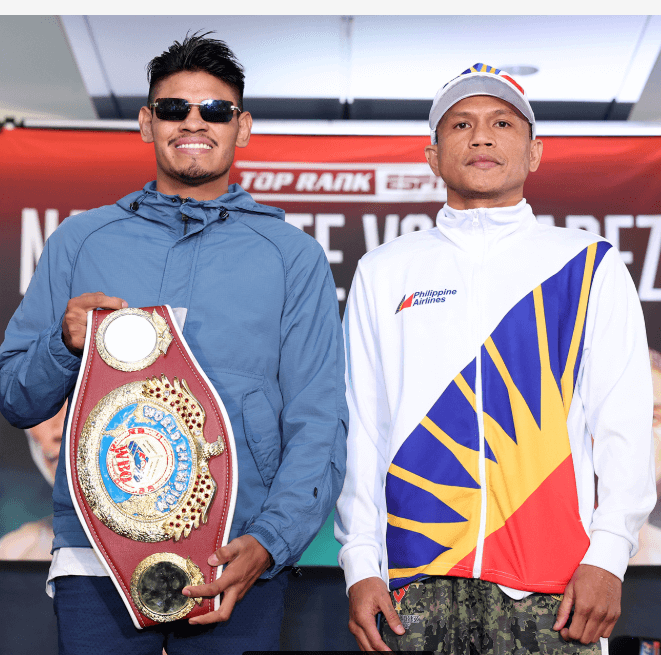
Avila Perspective, Chap. 326: Top Rank and San Diego Smoke
Years ago, I worked at a newsstand in the Beverly Hills area. It was a 24-hour a day version and the people that dropped by were very colorful and unique.
One elderly woman Eva, who bordered on homeless but pridefully wore lipstick, would stop by the newsstand weekly to purchase a pack of menthol cigarettes. On one occasion, she asked if I had ever been to San Diego?
I answered “yes, many times.”
She countered “you need to watch out for San Diego Smoke.”
This Saturday, Top Rank brings its brand of prizefighting to San Diego or what could be called San Diego Smoke. Leading the fight card is Mexico’s Emanuel Navarrete (39-2-1, 32 KOs) defending the WBO super feather title against undefeated Filipino Charly Suarez (18-0, 10 KOs) at Pechanga Arena. ESPN will televise.
This is Navarrete’s fourth defense of the super feather title.
The last time Navarrete stepped in the boxing ring he needed six rounds to dismantle the very capable Oscar Valdez in their rematch. One thing about Mexico City’s Navarrete is he always brings “the smoke.”
Also, on the same card is Fontana, California’s Raymond Muratalla (22-0, 17 KOs) vying for the interim IBF lightweight title against Russia’s Zaur Abdullaev (20-1, 12 KOs) on the co-main event.
Abdullaev has only fought once before in the USA and was handily defeated by Devin Haney back in 2019. But that was six years ago and since then he has knocked off various contenders.
Muratalla is a slick fighting lightweight who trains at the Robert Garcia Boxing Academy now in Moreno Valley, Calif. It’s a virtual boot camp with many of the top fighters on the West Coast available to spar on a daily basis. If you need someone bigger or smaller, stronger or faster someone can match those needs.
When you have that kind of preparation available, it’s tough to beat. Still, you have to fight the fight. You never know what can happen inside the prize ring.
Another fighter to watch is Perla Bazaldua, 19, a young and very talented female fighter out of the Los Angeles area. She is trained by Manny Robles who is building a small army of top female fighters.
Bazaldua (1-0, 1 KO) meets Mona Ward (0-1) in a super flyweight match on the preliminary portion of the Top Rank card. Top Rank does not sign many female fighters so you know that they believe in her talent.
Others on the Top Rank card in San Diego include Giovani Santillan, Andres Cortes, Albert Gonzalez, Sebastian Gonzalez and others.
They all will bring a lot of smoke to San Diego.
Probox TV
A strong card led by Erickson “The Hammer” Lubin (26-2, 18 KOs) facing Ardreal Holmes Jr. (17-0, 6 KOs) in a super welterweight clash between southpaws takes place on Saturday at Silver Spurs Arena in Kissimmee, Florida. PROBOX TV will stream the fight card.
Ardreal has rocketed up the standings and now faces veteran Lubin whose only losses came against world titlists Sebastian Fundora and Jermell Charlo. It’s a great match to decide who deserves a world title fight next.
Another juicy match pits Argentina’s Nazarena Romero (14-0-2) against Mexico’s Mayelli Flores (12-1-1) in a female super bantamweight contest.
Nottingham, England
Anthony Cacace (23-1, 8 KOs) defends the IBO super featherweight title against Leigh Wood (28-3, 17 KOs) in Wood’s hometown on Saturday at Nottingham Arena in Nottingham, England. DAZN will stream the Queensberry Promotions card.
Ireland’s Cacace seems to have the odds against him. But he is no stranger to dancing in the enemy’s lair or on foreign territory. He formerly defeated Josh Warrington in London and Joe Cordina in Riyadh in IBO title defenses.
Lampley at Wild Card
Boxing telecaster Jim Lampley will be signing his new book It Happened! at the Wild Card Boxing gym in Hollywood, Calif. on Saturday, May 10, beginning at 2 p.m. Lampley has been a large part of many of the greatest boxing events in the past 40 years. He and Freddie Roach will be at the signing.
Fights to Watch (All times Pacific Time)
Sat. DAZN 11 a.m. Anthony Cacace (23-1) vs Leigh Wood (28-3).
Sat. PROBOX.tv 3 p.m. Erickson Lubin (26-2) vs Ardreal Holmes Jr. (17-0).
Sat. ESPN 7 p.m. Emanuel Navarrete (39-2-1) vs Charly Suarez (18-0); Raymond Muratalla (22-0) vs Zaur Abdullaev (20-1).
Photo credit: Mikey Williams / Top Rank
To comment on this story in the Fight Forum CLICK HERE
Featured Articles
“Breadman” Edwards: An Unlikely Boxing Coach with a Panoramic View of the Sport
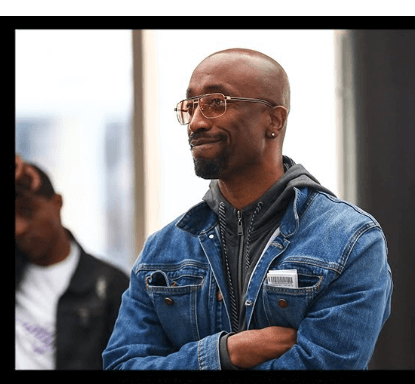
Stephen “Breadman” Edwards’ first fighter won a world title. That may be some sort of record.
It’s true. Edwards had never trained a fighter, amateur or pro, before taking on professional novice Julian “J Rock” Williams. On May 11, 2019, Williams wrested the IBF 154-pound world title from Jarrett Hurd. The bout, a lusty skirmish, was in Fairfax, Virginia, near Hurd’s hometown in Maryland, and the previously undefeated Hurd had the crowd in his corner.
In boxing, Stephen Edwards wears two hats. He has a growing reputation as a boxing coach, a hat he will wear on Saturday, May 31, at Mandalay Bay in Las Vegas when the two fighters that he currently trains, super middleweight Caleb Plant and middleweight Kyrone Davis, display their wares on a show that will air on Amazon Prime Video. Plant, who needs no introduction, figures to have little trouble with his foe in a match conceived as an appetizer to a showdown with Jermall Charlo. Davis, coming off his career-best win, an upset of previously undefeated Elijah Garcia, is in tough against fast-rising Cuban prospect Yoenli Hernandez, a former world amateur champion.
Edwards’ other hat is that of a journalist. His byline appears at “Boxing Scene” in a column where he answers questions from readers.
It’s an eclectic bag of questions that Breadman addresses, ranging from his thoughts on an upcoming fight to his thoughts on one of the legendary prizefighters of olden days. Boxing fans, more so than fans of any other sport, enjoy hashing over fantasy fights between great fighters of different eras. Breadman is very good at this, which isn’t to suggest that his opinions are gospel, merely that he always has something provocative to add to the discourse. Like all good historians, he recognizes that the best history is revisionist history.
“Fighters are constantly mislabled,” he says. “Everyone talks about Joe Louis’s right hand. But if you study him you see that his left hook is every bit as good as his right hand and it’s more sneaky in terms of shock value when it lands.”
Stephen “Breadman” Edwards was born and raised in Philadelphia. His father died when he was three. His maternal grandfather, a Korean War veteran, filled the void. The man was a big boxing fan and the two would watch the fights together on the family television.
Edwards’ nickname dates to his early teen years when he was one of the best basketball players in his neighborhood. The derivation is the 1975 movie “Cornbread, Earl and Me,” starring Laurence Fishburne in his big screen debut. Future NBA All-Star Jamaal Wilkes, fresh out of UCLA, plays Cornbread, a standout high school basketball player who is mistakenly murdered by the police.
Coming out of high school, Breadman had to choose between an academic scholarship at Temple or an athletic scholarship at nearby Lincoln University. He chose the former, intending to major in criminal justice, but didn’t stay in college long. What followed were a succession of jobs including a stint as a city bus driver. To stay fit, he took to working out at the James Shuler Memorial Gym where he sparred with some of the regulars, but he never boxed competitively.
Over the years, Philadelphia has harbored some great boxing coaches. Among those of recent vintage, the names George Benton, Bouie Fisher, Nazeem Richardson, and Bozy Ennis come quickly to mind. Breadman names Richardson and West Coast trainer Virgil Hunter as the men that have influenced him the most.
We are all a product of our times, so it’s no surprise that the best decade of boxing, in Breadman’s estimation, was the 1980s. This was the era of the “Four Kings” with Sugar Ray Leonard arguably standing tallest.
Breadman was a big fan of Leonard and of Leonard’s three-time rival Roberto Duran. “I once purchased a DVD that had all of Roberto Duran’s title defenses on it,” says Edwards. “This was a back before the days of YouTube.”
But Edwards’ interest in the sport goes back much deeper than the 1980s. He recently weighed in on the “Pittsburgh Windmill” Harry Greb whose legend has grown in recent years to the point that some have come to place him above Sugar Ray Robinson on the list of the greatest of all time.
“Greb was a great fighter with a terrific resume, of that there is no doubt,” says Breadman, “but there is no video of him and no one alive ever saw him fight, so where does this train of thought come from?”
Edwards notes that in Harry Greb’s heyday, he wasn’t talked about in the papers as the best pound-for-pound fighter in the sport. The boxing writers were partial to Benny Leonard who drew comparisons to the venerated Joe Gans.
Among active fighters, Breadman reserves his highest praise for Terence Crawford. “Body punching is a lost art,” he once wrote. “[Crawford] is a great body puncher who starts his knockouts with body punches, but those punches are so subtle they are not fully appreciated.”
If the opening line holds up, Crawford will enter the ring as the underdog when he opposes Canelo Alvarez in September. Crawford, who will enter the ring a few weeks shy of his 38th birthday, is actually the older fighter, older than Canelo by almost three full years (it doesn’t seem that way since the Mexican redhead has been in the public eye so much longer), and will theoretically be rusty as 13 months will have elapsed since his most recent fight.
Breadman discounts those variables. “Terence is older,” he says, “but has less wear and tear and never looks rusty after a long layoff.” That Crawford will win he has no doubt, an opinion he tweaked after Canelo’s performance against William Scull: “Canelo’s legs are not the same. Bud may even stop him now.”
Edwards has been with Caleb Plant for Plant’s last three fights. Their first collaboration produced a Knockout of the Year candidate. With one ferocious left hook, Plant sent Anthony Dirrell to dreamland. What followed were a 12-round setback to David Benavidez and a ninth-round stoppage of Trevor McCumby.
Breadman keeps a hectic schedule. From Monday through Friday, he’s at the DLX Gym in Las Vegas coaching Caleb Plant and Kyrone Davis. On weekends, he’s back in Philadelphia, checking in on his investment properties and, of greater importance, watching his kids play sports. His 14-year-old daughter and 12-year-old son are standout all-around athletes.
On those long flights, he has plenty of time to turn on his laptop and stream old fights or perhaps work on his next article. That’s assuming he can stay awake.
To comment on this story in the Fight Forum CLICK HERE
Featured Articles
Arne’s Almanac: The Good, the Bad, and the (Mostly) Ugly; a Weekend Boxing Recap and More
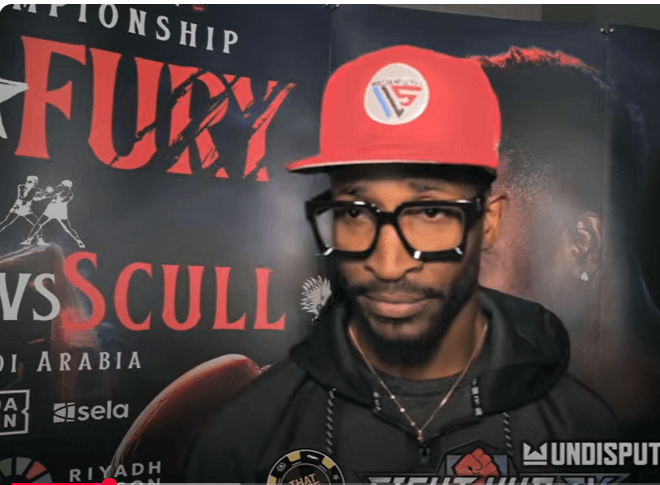
Arne’s Almanac: The Good, the Bad, and the (Mostly) Ugly; a Weekend Boxing Recap and More
It’s old news now, but on back-to-back nights on the first weekend of May, there were three fights that finished in the top six snoozefests ever as measured by punch activity. That’s according to CompuBox which has been around for 40 years.
In Times Square, the boxing match between Devin Haney and Jose Carlos Ramirez had the fifth-fewest number of punches thrown, but the main event, Ryan Garcia vs. Rolly Romero, was even more of a snoozefest, landing in third place on this ignoble list.
Those standings would be revised the next night – knocked down a peg when Canelo Alvarez and William Scull combined to throw a historically low 445 punches in their match in Riyadh, Saudi Arabia, 152 by the victorious Canelo who at least pressed the action, unlike Scull (pictured) whose effort reminded this reporter of “Cat on a Hot Tin Roof” – no, not the movie starring Paul Newman, just the title.
CompuBox numbers, it says here, are best understood as approximations, but no amount of rejiggering can alter the fact that these three fights were stinkers. Making matters worse, these were pay-per-views. If one had bundled the two events, rather than buying each separately, one would have been out $90 bucks.
****
Thankfully, the Sunday card on ESPN from Las Vegas was redemptive. It was just what the sport needed at this moment – entertaining fights to expunge some of the bad odor. In the main go, Naoya Inoue showed why he trails only Shohei Ohtani as the most revered athlete in Japan.
Throughout history, the baby-faced assassin has been a boxing promoter’s dream. It’s no coincidence that down through the ages the most common nickname for a fighter – and by an overwhelming margin — is “Kid.”
And that partly explains Naoya Inoue’s charisma. The guy is 32 years old, but here in America he could pass for 17.
Joey Archer
Joey Archer, who passed away last week at age 87 in Rensselaer, New York, was one of the last links to an era of boxing identified with the nationally televised Friday Night Fights at Madison Square Garden.
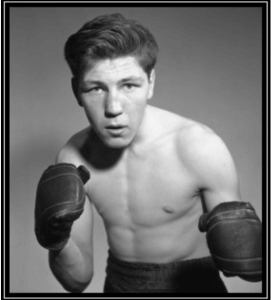
Joey Archer
Archer made his debut as an MSG headliner on Feb. 4, 1961, and had 12 more fights at the iconic mid-Manhattan sock palace over the next six years. The final two were world title fights with defending middleweight champion Emile Griffith.
Archer etched his name in the history books in November of 1965 in Pittsburgh where he won a comfortable 10-round decision over Sugar Ray Robinson, sending the greatest fighter of all time into retirement. (At age 45, Robinson was then far past his peak.)
Born and raised in the Bronx, Joey Archer was a cutie; a clever counter-puncher recognized for his defense and ultimately for his granite chin. His style was embedded in his DNA and reinforced by his mentors.
Early in his career, Archer was domiciled in Houston where he was handled by veteran trainer Bill Gore who was then working with world lightweight champion Joe Brown. Gore would ride into the Hall of Fame on the coattails of his most famous fighter, “Will-o’-the Wisp” Willie Pep. If Joey Archer had any thoughts of becoming a banger, Bill Gore would have disabused him of that notion.
In all honesty, Archer’s style would have been box office poison if he had been black. It helped immensely that he was a native New Yorker of Irish stock, albeit the Irish angle didn’t have as much pull as it had several decades earlier. But that observation may not be fair to Archer who was bypassed twice for world title fights after upsetting Hurricane Carter and Dick Tiger.
When he finally caught up with Emile Griffith, the former hat maker wasn’t quite the fighter he had been a few years earlier but Griffith, a two-time Fighter of the Year by The Ring magazine and the BWAA and a future first ballot Hall of Famer, was still a hard nut to crack.
Archer went 30 rounds with Griffith, losing two relatively tight decisions and then, although not quite 30 years old, called it quits. He finished 45-4 with 8 KOs and was reportedly never knocked down, yet alone stopped, while answering the bell for 365 rounds. In retirement, he ran two popular taverns with his older brother Jimmy Archer, a former boxer who was Joey’s trainer and manager late in Joey’s career.
May he rest in peace.
To comment on this story in the Fight Forum CLICK HERE
-
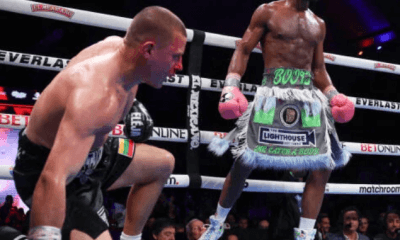
 Featured Articles4 weeks ago
Featured Articles4 weeks agoJaron ‘Boots’ Ennis Wins Welterweight Showdown in Atlantic City
-

 Featured Articles4 weeks ago
Featured Articles4 weeks agoBoxing Notes and Nuggets from Thomas Hauser
-
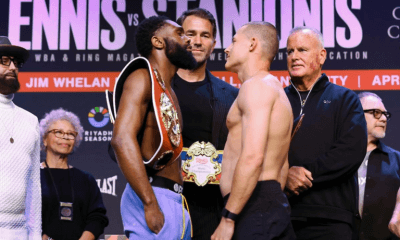
 Featured Articles4 weeks ago
Featured Articles4 weeks agoAvila Perspective Chap 320: Boots Ennis and Stanionis
-
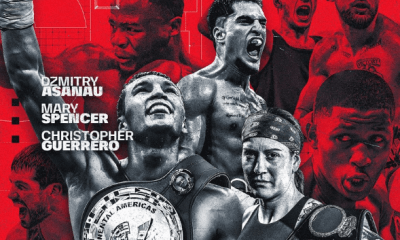
 Featured Articles4 weeks ago
Featured Articles4 weeks agoDzmitry Asanau Flummoxes Francesco Patera on a Ho-Hum Card in Montreal
-
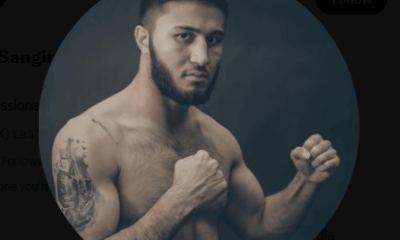
 Featured Articles3 weeks ago
Featured Articles3 weeks agoMekhrubon Sanginov, whose Heroism Nearly Proved Fatal, Returns on Saturday
-

 Featured Articles3 weeks ago
Featured Articles3 weeks agoAvila Perspective, Chap. 322: Super Welterweight Week in SoCal
-
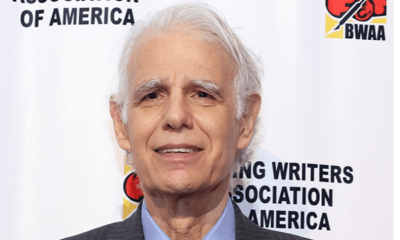
 Featured Articles3 weeks ago
Featured Articles3 weeks agoTSS Salutes Thomas Hauser and his Bernie Award Cohorts
-
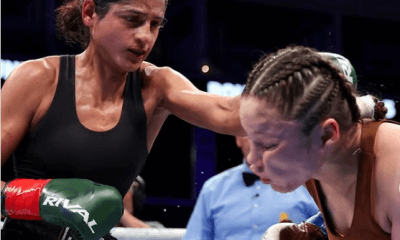
 Featured Articles3 weeks ago
Featured Articles3 weeks agoGabriela Fundora KOs Marilyn Badillo and Perez Upsets Conwell in Oceanside















